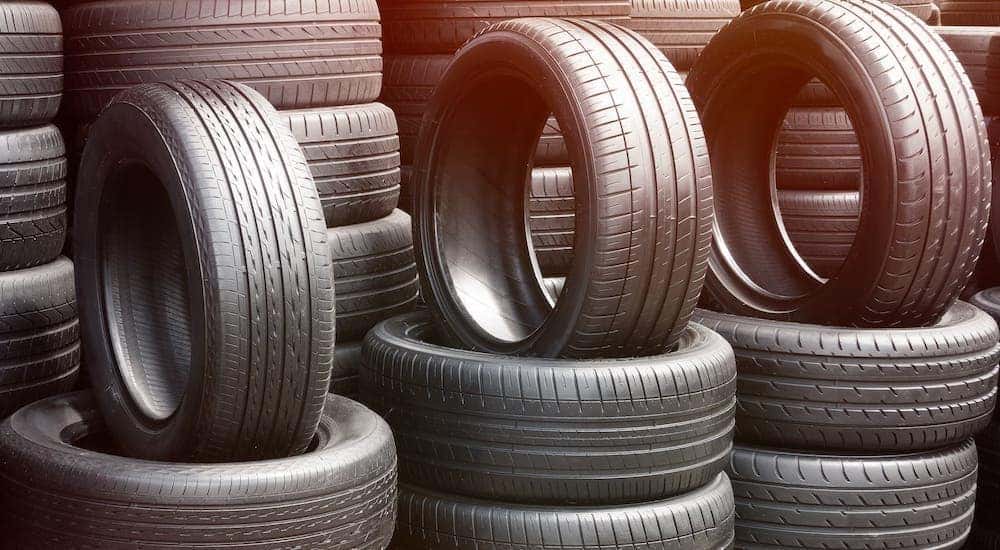Tire Service: The Effect of Weather Problems
When it comes to making sure optimal performance and safety and security when driving, comprehending the influence of weather problems on tire solution is essential. From scorching warm to icy roadways, each weather aspect can dramatically influence tire functionality and general driving experience. By diving right into the effects of varying weather condition problems on tires, vehicle drivers can gain important understandings that might boost their vehicle's performance and durability. In this conversation, we will certainly discover the detailed relationship in between weather conditions and tire solution, clarifying the significance of weather-specific tire upkeep practices and considerations.
Warm and Tire Performance
When subjected to heats, tires experience changes in performance that can significantly influence automobile safety and security and handling. The warmth created from long term driving or warm weather condition problems causes the tire rubber to soften, leading to lowered step life and boosted wear. As the rubber ends up being softer, the tire's grip on the roadway lessens, influencing braking distances and total traction. In extreme instances, extreme heat can also trigger tire blowouts, positioning a severe security danger to the vehicle and its owners.
Furthermore, high temperature levels can speed up the process of tire aging, causing the rubber to degrade quicker. This can lead to splits, bulges, and various other forms of damages that compromise the structural honesty of the tire. To reduce the results of heat on tire efficiency, drivers must routinely examine their tire pressure, turn tires to make certain even use, and evaluate for any indications of damages. Additionally, utilizing tires especially designed to withstand high temperature levels can aid maintain ideal efficiency and safety on the road.
Winter Results
Cold weather conditions can have a significant influence on tire performance and safety. As temperatures drop, tire rubber can harden, resulting in decreased traction on icy or snow-covered roadways. In winter, tires might additionally shed air pressure a lot more rapidly, which can affect dealing with and fuel effectiveness. Furthermore, cool temperature levels can create tire sidewalls to tense, boosting the danger of damage from craters or various other roadway risks.
To mitigate the results of cool weather condition on tires, it is essential to routinely examine tire stress and inflate them to the producer's advised levels. Using winter season or all-season tires designed for winter conditions can also enhance traction and hold on icy or snowy roads - morris tire and alignment. Proper tire upkeep, including routine inspections for wear and damages, becomes also much more critical throughout colder months to make certain optimal efficiency and safety
Rainy Issues Influence
During wet conditions, tire performance and safety can be considerably influenced by the wet road surface areas and lowered presence. The step pattern of tires plays a critical duty in keeping grip on wet roads. Tires with damaged treads are much more prone to hydroplaning, where a layer of water builds up in between the roadway and the tire surface, resulting in loss of traction. To battle this, vehicle drivers must consistently check their tires for appropriate tread deepness and take into consideration investing in tires specifically made for damp conditions.

Snow and Tire Safety And Security
When driving in snowy problems, having the appropriate tires can make a considerable difference in safety and security and performance. Winter months tires are created with unique rubber substances and walk patterns to offer far better traction on snow and ice compared to all-season tires.
Along with using winter months tires, it is essential to ensure they are correctly pumped up. Winter can cause tire stress to drop, impacting grip and handling (mopar tire service specials). On a regular basis examining and maintaining the appropriate tire stress is necessary for ideal performance in snowy problems

Weather-Related Tire Maintenance
When encountered with various weather, proper tire upkeep becomes a critical aspect of automobile safety and performance. Weather-related tire upkeep encompasses a variety of methods targeted at guaranteeing optimum tire function and durability in various climate scenarios. One crucial facet of weather-related tire maintenance is tire pressure guideline. Fluctuating temperatures can trigger tire stress to differ, impacting traction and fuel effectiveness. Consistently changing and inspecting tire stress according to supplier recommendations is important for risk-free driving in altering climate condition. In addition, tire step deepness plays a significant role in handling different weather elements. Tires with sufficient walk depth offer much better hold on wet or icy roads, reducing the risk of skidding or hydroplaning. Examining tire walk frequently and changing tires when walk wear reaches a specific depth is important for maintaining traction and security in damaging climate. By prioritizing weather-related tire maintenance, drivers can boost security, enhance vehicle efficiency, and extend the life expectancy of their tires.
Final Thought
To conclude, weather have a considerable effect on tire efficiency and safety. From warm influencing tire pressure and put on to cold climate decreasing grip, it is necessary to take into consideration the weather condition when keeping and using tires. Wet problems can decrease hold and lead to hydroplaning, while snow can enhance the threat of accidents if tires are not appropriately equipped. Weather-related tire maintenance is critical in guaranteeing ideal efficiency and safety when driving.
In this discussion, we will explore the elaborate connection in between this page weather condition problems and tire solution, losing light on the relevance of weather-specific tire upkeep techniques and factors to consider.
